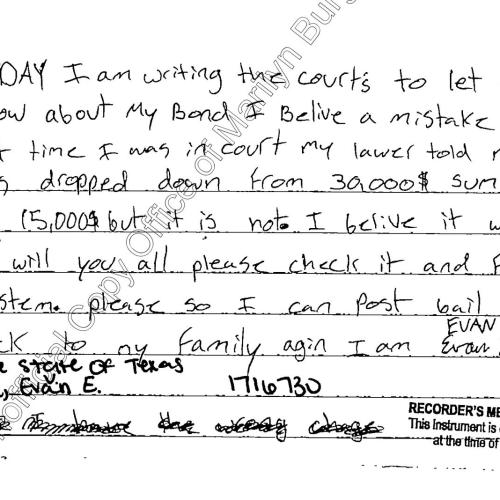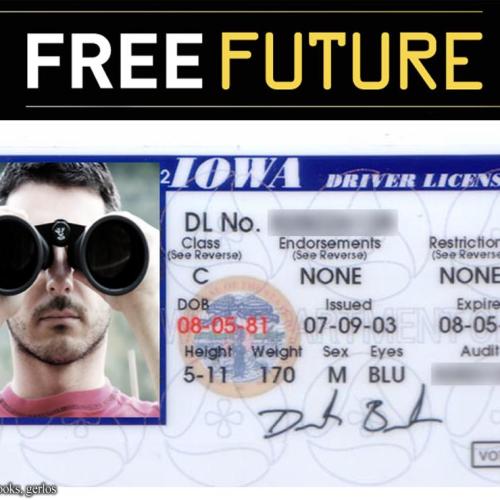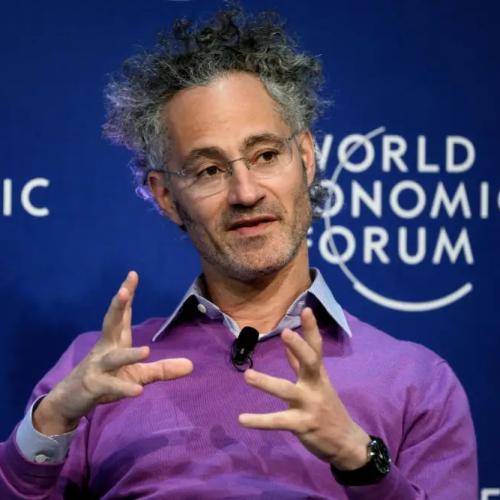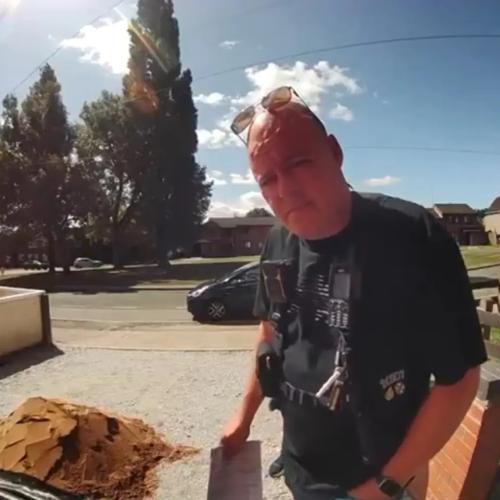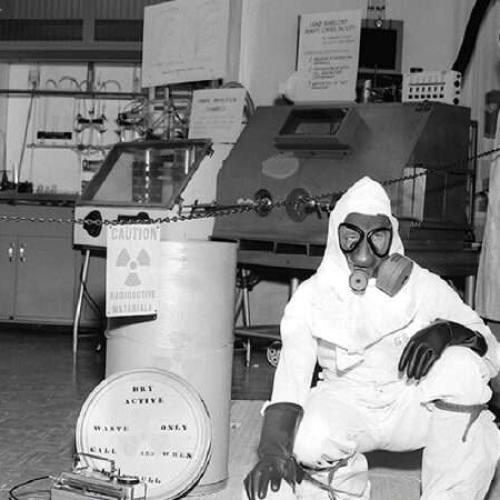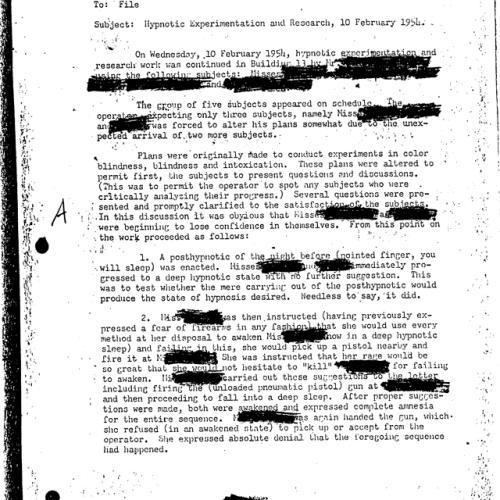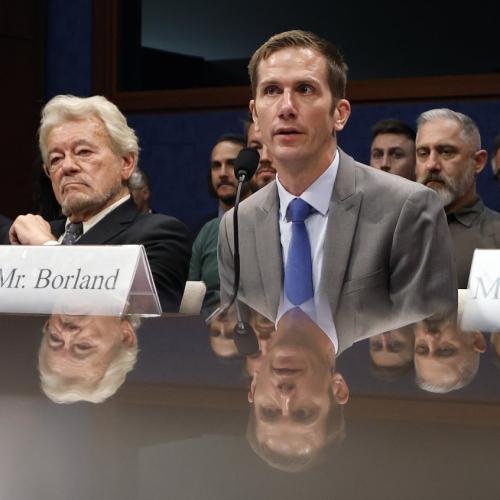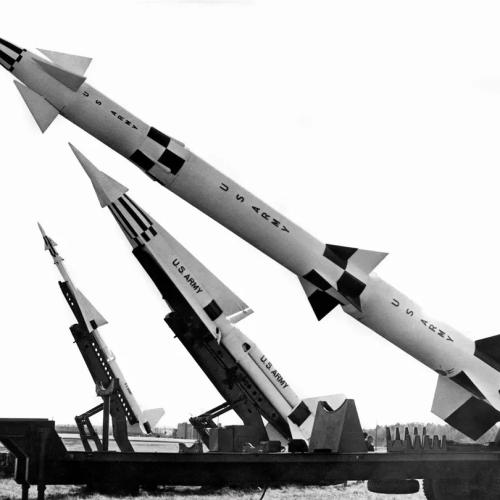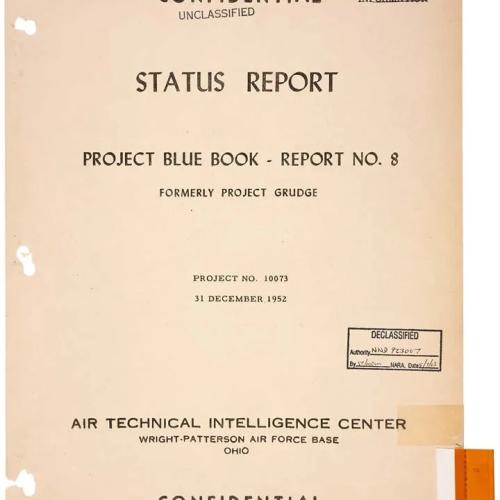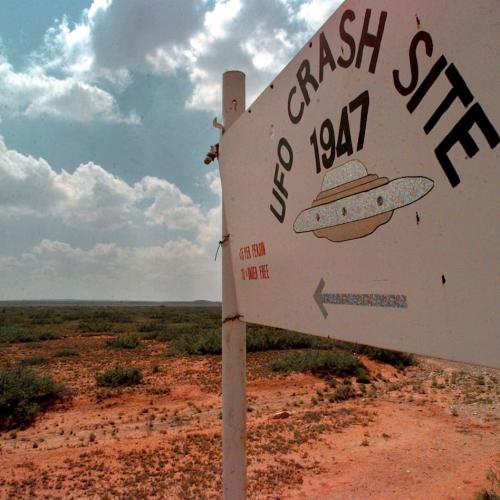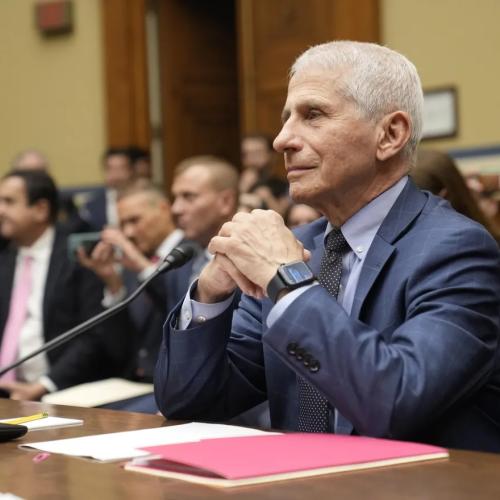Energy Inventions News Stories
Below are key excerpts of revealing news articles on energy inventions from reliable news media sources. If any link fails to function, a paywall blocks full access, or the article is no longer available, try these digital tools.
For further exploration, delve into our Energy Information Center.
The U.S. Department of Energy (DOE) is quitting the hydropower and geothermal power research business -- if Congress will let it. Declaring them "mature technologies" that need no further funding, the Bush administration in its FY 2007 budget request eliminates hydropower and geothermal research. "What we do well is research and funding of new, novel technologies," says Craig Stevens, chief spokesman for the DOE. "I'm just astonished the department would zero out these very small existing budgets for geothermal and hydro," says V. John White, executive director of the Center for Energy Efficiency and Renewable Technologies. "These are very important resources for our energy future that could replace the need for a lot of coal-fired power plants." Indeed, the costs of lost opportunities from dropping such research could be enormous in the long run. Geothermal holds vast potential -- at least 30,000 megawatts of identified resources developable by 2050. Meanwhile, the more than 5,400 potential "small hydro" power projects could produce about 20,000 megawatts of power, a DOE study in January found. And most would require no new dams at all, shunting a portion of a small river's flow to one side to make electricity. Others would add turbines to dams that don't have them yet. Together, high-tech hydropower and geothermal resources could contribute at least enough power to replace more than 100 medium-size coal-fired power plants with emissions-free electricity.
These dynamic and personable businessmen from Dublin insist that they have found a way of producing free, clean and limitless energy out of thin air. So, as they prepare to demonstrate this wonder of science to me...I feel all the excitement of Christmas Day. There is a test rig with wheels and cogs and four magnets meticulously aligned so as to create the maximum tension between their fields and one other magnet fixed to a point opposite. A motor rotates the wheel bearing the magnets and a computer takes 28,000 measurements a second. And when it is all over, the computer tells us that almost three times the amount of energy has come out of the system as went in. In fact, this piece of equipment is 285% efficient. "We couldn't believe it at first, either," says McCarthy, chief executive of the company. "We wanted to improve the performance of the wind generators...so we experimented with certain generator configurations and then one day one of our guys...came in and said: 'We have a problem. We appear to be getting out more than we're putting in.'" That was three years ago. Since then, McCarthy says, the company has spent 2.7m developing the technology. Until their claims have been assessed by the jury, McCarthy says they won't be accepting any investor offers. So if this is a hoax, it would appear not to be a money-making scheme. The Economist ad alone cost 75,000. "We expected stick, and we're getting it already. We've had a lot of abusive emails and telephone calls -people telling us to watch our backs"
Note: To understand how this is possible, see http://www.WantToKnow.info/newenergysources
A man who claims to have developed a free energy technology which could power everything from mobile phones to cars has received more than 400 applications from scientists to test it. Sean McCarthy says that no one was more sceptical than he when Steorn, his small hi-tech firm in Dublin, hit upon a way of generating clean, free and constant energy from the interaction of magnetic fields. 'It wasn't so much a Eureka moment as a get-back-in-there-and-check-your-instruments moment, although in far more colourful language,' said McCarthy. But when he attempted to share his findings, he says, scientists either put the phone down on him or refused to endorse him publicly in case they damaged their academic reputations. So last week he took out a full-page advert in the Economist magazine, challenging the scientific community to examine his technology. McCarthy claims it provides five times the amount of energy a mobile phone battery generates for the same size, and does not have to be recharged. Within 36 hours of his advert appearing he had been contacted by 420 scientists in Europe, America and Australia, and a further 4,606 people had registered to receive the results.
Steorn has now posted a slick, five-minute video that features interviews with company CEO Sean McCarthy as well as the company's marketing director. For more background, see our earlier discussion. The video's slick, and not too heavy on scientific detail. But it's worth checking out. It does begin to explain the company's motivations for choosing to issue a challenge in the Economist. McCarthy: "The first roadblock is science. With the academic community, it might take five to seven years before being able to get to a consensus position. As a business, that makes absolutely no sense." The video explains that a "quiet" campaign was plan A. The direct marketing approach currently being taken is Plan B. McCarthy: "The claim does rail against so much thinking from ordinary people. We have to fight public opinion, we have to fight the scientific community and we have to fight the energy industry. We couldn't pick a worse battleground."
Note: For lots more on the many who have developed similar discoveries and how they have been either bought out or shut down, click here.
Brazil's new generation of cars and trucks adapted to run on alcohol has just hit the two-million mark. "Flex-fuel" vehicles, which run on any combination of ethanol and petrol, now make up 77% of the Brazilian market. Brazil has pioneered the use of ethanol derived from sugar-cane as motor fuel. Ethanol-driven cars have been on sale there for 25 years, but they have been enjoying a revival since flex-fuel models first appeared in March 2003. Just 48,200 flex-fuel cars were sold in Brazil in 2003, but the total had reached 1.2 million by the end of last year and had since topped two million, the Brazilian motor manufacturers' association Anfavea said.
Note: With sky-high gasoline prices and the fear of depletion of global oil supplies, why don't such cars exist in the U.S.? Why are the trains of almost every other developed nation far advanced from trains in the U.S.? And why isn't the U.S. media reporting on this important development? For possible answers, click here. The excellent movie Who Killed the Electric Car is also incredibly revealing.
Several small, independent automakers are juicing up electric cars. Among the companies trying to lead the charge: Tesla. Tesla Motors...is taking orders for a $100,000 electric high-performance sports car...billed as capable of a Ferrari-like zero to 60 mph in four seconds. The car was designed in California but will be built by Lotus in Great Britain. Its sophisticated lithium-ion battery will allow a range of 250 miles on a single charge and a top speed of 130 mph. Wrightspeed...hopes to produce its own, $100,000 high-performance car within two years. It will have about a 200-mile range. Ian Wright, who heads Wrightspeed...says the new breed of electric cars could have three times the energy efficiency of gas-electric hybrids. "You can build something that's seriously fast and a lot of fun to drive." Zap. At the other end of the performance spectrum...Zap last month started selling a three-wheel electric "city car" imported from China that it says is capable of a top speed of 40 mph. Priced at $9,000, the Xebra has a range of about 40 miles. Tomberlin Group...plans to sell three versions of electric cars. Prices will range from $5,000 for E-Merge E-2 to $8,000 for the four-seat Anvil. The electric revival comes as...Who Killed the Electric Car? has started playing in theaters. The movie alleges that big automakers, oil companies and the government sank promising electric-car technology. The film singles out General Motors for...having created a futuristic electric car that became a Hollywood enviro-darling. When leases ran out, GM collected its Saturn EV1s and sent them to the crusher.
Note: I've heard that Who Killed the Electric Car? is an excellent, revealing film. For lots more on why car mileage has not significantly increased since the days of the Model T (which got 25 miles to the gallon), see http://www.WantToKnow.info/050711carmileageaveragempg
It's a dream that's been pursued for years: Mass-producing affordable hydrogen-powered cars that spew just clean water from their tailpipes. So Shanghai's Horizon Fuel Cell Technologies decided to start small. Really small. This month, it will begin sales of a tiny hydrogen fuel-cell car, complete with its own miniature solar-powered refueling station. The toy is a step toward introducing the technology to the public and making it commercially viable. Though prototype hydrogen cars exist, they're far from practical or affordable. Horizon's H-Racer and fueling station solve those problems on a very small scale. The price: $80 for the set. The toy's fuel cell, like those envisioned for real cars, relies on an electrochemical reaction...that powers the gadget's electric motor. The only byproducts are electricity, heat and water. The fuel is supplied by its alarm clock-sized refueling station. A small electric current, generated by the solar cells, extracts hydrogen from water. With the flip of a switch, the car takes off and runs for 4 minutes on a full tank. At Horizon's headquarters...Wankewycz and former Eastman Chemical Co. colleague George Gu demonstrated prototypes of a hydrogen-powered electric bicycle and a golf caddy they are converting from lead acid batteries to hydrogen power. "We're working on the smaller things until the infrastructure is ready," he says. On the Net: Horizon Fuel Cell Technologies: http://www.horizonfuelcell.com
Note: If governments and car companies poured millions into researching this technology, rapid progress could be made. For why this cutting-edge company is located in Shanghai and why they have only $3 million to work with, take a look at http://www.WantToKnow.info/newenergysources
At a glittering Los Angeles party, an ambitious new car maker declared the electric car alive and well. The Tesla Roadster, which can go from 0 to 60 mph in 4 seconds doesn't come from Detroit, but from high tech Silicon Valley aiming to do what Detroit couldn't -- make a commercially successful car that doesn't burn gas. "Electric cars don't have to be little, pathetic commuter cars," says Martin Eberhard, CEO of Tesla Motors. "They can be quick and they can be desirable." Eberhard made millions in the computer industry, then convinced other high tech investors like Elon Musk, the founder of PayPal, to put in big money. Musk expects huge rewards if Silicon Valley can break Detroit's grip on the U.S. auto industry. "It's batteries, it's drive electronics, it's electric motors," says Musk. "Those are skills that are present in Silicon Valley and not present in Detroit." There's a quick charger for the Tesla's lithium batteries but the car can be plugged in anywhere. It'll go 250 miles on a single charge -- at a cost the company says, of just 1 cent a mile. Tesla expects to quickly sell its first 100 cars for $100,000 each. But, don't give up. The company also has plans for a car for the rest of us. Tesla promises a less expensive four-door family car within three years. For now, however, it's the rich and famous who are getting a charge out of this electric car, such as Gov. Arnold Schwarzenegger, who tried out the car and had two words to say: "Very Nice."
Note: Don't be surprised if this technology inexplicably disappears as so many others have, like the once heralded 100 MPG Toyota Eco Spirit back in 2002. For lots more reliable information on the suppression of new energy inventions, see http://www.WantToKnow.info/newenergyinformation.
A poignant new documentary asks who killed GM's promising electric car project? A new documentary released June 28 in New York and Los Angeles, appropriately titled Who Killed The Electric Car? tries in Clue-like fashion to figure out why GM pulled the plug on its EV1 electric vehicle program, which by most accounts was approaching success when the first prototype was introduced in the mid-1990s. "It was a revolutionary, modern car, requiring no gas, no oil changes, no mufflers, and rare brake maintenance," according to a synopsis of the film. In the 1990s a strict clean-air mandate introduced in California that called for zero-emission vehicles was what led GM to introduce the EV1. Eventually that California mandate got watered down from "zero" to "low" emissions, and the automakers decided to literally blow up their EV programs. GM, which leased out the EV1 cars it produced, called them all back after California changed its policy. The cars were crushed and shredded. Who were the people leasing these vehicles? Tom Hanks, Mel Gibson and Ted Danson, among others, many of whom appear in the movie and talk favourably about their electric cars. If the implications of an advance means loss of future business to a paradigm, the key players of that paradigm will lobby to kill it. The paradigm? Big oil. Similarly, the auto industry has an interest in perpetuating the manufacture of vehicles that require routine, costly maintenance.
Note: For more information and showing times on the highly revealing Who Killed The Electric Car, visit www.whokilledtheelectriccar.com. For even deeper information www.WantToKnow.info/newenergysources
A team of engineering students from The University of British Columbia has built a vehicle so efficient that it could travel from Vancouver to Halifax on a gallon of gasoline. The futuristic-looking, single-occupancy vehicle won top prize at a recent international competition, marking the UBC team's fourth win in as many years. The Society of Automotive Engineers (SAE) Supermileage Competition took place June 9 in Marshall, Michigan. Forty teams from Canada, the U.S. and India competed in designing and building the most fuel-efficient vehicle. 'We achieved this level of efficiency by optimizing many aspects of the vehicle design, including: aerodynamics, light-weight construction, a small displacement engine (54 cc), and conservative driving habits,' says Team Captain Kevin Li. The UBC design...achieved 3,145 miles per US gallon. Supermileage...is an annual student competition that challenges students to design, build, and drive a single person vehicle (powered solely by a gasoline engine) to achieve the best fuel mileage possible. The vehicle must be powered by only an internal combustion engine, with no assistance from electric motors or human propulsion.
Note: Why don't we see articles like this in the mainstream media? Even if this vehicle is ultra lightweight and has a top speed of only 30 mph, why can't we design heavier, faster cars which get just 10% of what this car got? For answers to this question, see http://www.WantToKnow.info/050711carmileageaveragempg
Manuel Salinas, a 39-year-old inventor, claims he has built a machine that has extraordinary capabilities for finding buried objects. And now that university lab tests seem to confirm that his robot works, mining and oil corporations are flooding him with business plans. How this machine functions is still an "industrial secret," Salinas said. But ask him for proof that it works and he'll hand you a pile of press clippings on the device, called Geo-Radar or Arturito (a play on the name of Star Wars robot R2-D2). In September 2005 Salinas announced that he had found gold and buried treasure on the Juan Fernndez Islands...off the coast of Chile. Recently, Salinas asked a Chilean university to study the machine and put the questions surrounding it to rest. In early May the results came in, and the Geo-Radar jumped back into local headlines. University investigators announced laboratory and field tests indicating that the Geo-Radar technology is capable of quickly finding copper deposits, petroleum, and gold bullion at depths of up to 600 feet (283 meters). "This reduces the time of exploration from three months to one day," said engineering professor Ricardo Neira Navarro at a press conference in Santiago, the national capital. "I built this machine to find buried antipersonnel mines," explained Salinas. When he finished building the machine in 2004 and ran field tests, Salinas says, the machine surprised him with its abilities to find water, petroleum, and buried metals.
The home and office of Kyle Foggo, who stepped down on Monday as the Central Intelligence Agency's No. 3 official, were searched today. Mr. Foggo resigned after becoming entangled in a widening investigation that has already brought down former Representative Randy Cunningham. Mr. Foggo's workplace in Langley, Va., and his residence in Virginia were searched this morning by agents of the Federal Bureau of Investigation and the C.I.A. inspector general's office. April Langwell, a spokeswoman for the F.B.I.'s San Diego office, said Mr. Foggo had been under investigation by the Internal Revenue Service and the Defense Criminal Investigative Service of the Defense Department's inspector general's office, as well as by the C.I.A.'s inspector general and the F.B.I. The inquiry by the C.I.A.'s inspector is examining whether he improperly awarded agency contracts to a longtime friend, Brent R. Wilkes, a military contractor whose companies have received nearly $100 million in government contracts over the years. Mr. Foggo, 51, has admitted attending poker parties throughout the 1990's that Mr. Wilkes held in a suite at the Watergate Hotel in Washington. The parties were primarily attended by C.I.A. officials and congressmen, and Mr. Cunningham, a California Republican, occasionally attended. Several news media accounts have reported that prostitutes frequented the parties.
Note: This article has huge significance. Until just a few years ago, there was a virtual blackout in the media on any negative coverage of the CIA. The fact that the Feds raided the home of the #3 man in the CIA and it was reported in top newspapers is an external manifestation of huge shake-ups going on behind the scenes. Buzzy Krongard, the previous #3 at the CIA has been linked to the millions of dollars in suspicious stock option trades made just prior to 9/11 that were never claimed, though this received little media coverage.
The main limitation of solar power right now is cost, because the crystalline silicon used to make most solar photovoltaic (PV) cells is very expensive. One approach to overcoming this cost factor is to concentrate light from the sun using mirrors or lenses. But traditional light concentrators are bulky and unattractive. Now Prism Solar Technologies...has developed a proof-of-concept solar module that uses holograms to concentrate light, possibly cutting the cost of solar modules by as much as 75 percent, making them competitive with electricity generated from fossil fuels. The panels, says Rick Lewandowski, the company's president and CEO, are a "more elegant solution" to traditional concentrators, and can be installed on rooftops -- or even incorporated into windows and glass doors. A layer of holograms...directs light into a layer of glass where it continues to reflect off the inside surface of the glass until it finds its way to one of the strips of PV silicon. Reducing the PV material needed could bring down costs from about $4 per watt to $1.50 for crystalline silicon panels. The company is expecting to...start manufacturing its first-generation modules by the end of the year, selling them at about $2.40 per watt. CEO Lewandowski says the holographic modules will cost about $1.50 per watt in a few years, using their second-generation technology. At that price, they'll start to compete with fossil fuel-generated electricity, which now costs almost three times less than conventional solar electricity.
The above link is not a news article, but rather a fascinating 12-minute video demonstrating inspiring new energy technologies. I have seen the longer, full video, which is one of the best videos available covering this exciting field. For more on the full video, see http://www.WantToKnow.info/resources#free. For an excellent two-page summary of the new energy field, see http://www.WantToKnow.info/newenergysources.
Note: The Guardian also had an article on this amazing technology last year. See the link below:
http://www.guardian.co.uk/uk_news/story/0,,1481009,00.html
A much-shrouded idea could give portable power a real charge, for a change -- and change, well, everything. Imagine the day when cellphones charge up in seconds, laptop batteries never degrade, and electric cars have the same power, driving range and purchase price as their gas-powered cousins. Such a battery -- a superbattery -- doesn't exist today, but a tiny company out of Austin, Texas, is getting remarkably close, and the possibilities have caught the attention of the U.S. army, the former vice-chairman of Dell Computer, and one of the most respected venture capital firms in North America. Among EEStor's claims is that its "electrical energy storage unit" could pack nearly 10 times the energy punch of a lead-acid battery of similar weight and, under mass production, would cost half as much. It also says its technology more than doubles the energy density of lithium-ion batteries in most portable computer and mobile gadgets today, but could be produced at one-eighth the cost. The company...is weeks away from seeking independent verification of the product's performance. Adding more intrigue to the story is the fact that Colin Powell, the former U.S. secretary of state, joined Kleiner Perkins last summer as a strategic partner.
The star at last week's Philadelphia Auto Show wasn't a sports car or an economy car. It was a sports-economy car one that combines performance and practicality under one hood. But as CBS News correspondent Steve Hartman reports in this week's Assignment America, the car that buyers have been waiting decades [for] comes from an unexpected source and runs on soybean bio-diesel fuel to boot. A car that can go from zero to 60 in four seconds and get more than 50 miles to the gallon would be enough to pique any driver's interest. So who do we have to thank for it. Ford? GM? Toyota? No just Victor, David, Cheeseborough, Bruce, and Kosi, five kids from the auto shop program at West Philadelphia High School. The five kids ... built the soybean-fueled car as an after-school project. It took them more than a year rummaging for parts, configuring wires and learning as they went. As teacher Simon Hauger notes, these kids weren't exactly the cream of the academic crop. "If you give kids that have been stereotyped as not being able to do anything an opportunity to do something great, they'll step up," he says. Stepping up is something the big automakers have yet to do. They're still in the early stages of marketing hybrid cars while playing catch-up to the Bad News Bears of auto shop. "We made this work," says Hauger. "We're not geniuses. So why aren't they doing it?" Kosi thinks he knows why. The answer, he says, is the big oil companies.
Note: So why isn't this remarkable engine design breakthrough making front page headlines in all major media? Why aren't the many other major energy breakthroughs that have been reported given the headlines they deserve? Could it be that those who are reaping huge profits from oil sales have much more political and media influence than you might imagine? For lots more reliable information on this, click here.
Researchers at Rensselaer Polytechnic Institute have developed a tabletop accelerator that produces nuclear fusion at room temperature, providing confirmation of an earlier experiment conducted at the University of California, Los Angeles (UCLA). The device, which uses two opposing crystals to generate a powerful electric field, could potentially lead to a portable, battery-operated neutron generator for a variety of applications, from non-destructive testing to detecting explosives and scanning luggage at airports. The device is essentially a tabletop particle accelerator. At its heart are two opposing pyroelectric crystals that create a strong electric field when heated or cooled. The device is filled with deuterium gas a more massive cousin of hydrogen with an extra neutron in its nucleus. The electric field rips electrons from the gas, creating deuterium ions and accelerating them into a deuterium target on one of the crystals. When the particles smash into the target, neutrons are emitted, which is the telltale sign that nuclear fusion has occurred. The new study also verified the fundamental physics behind the original experiment. This suggests that pyroelectric crystals are in fact a viable means of producing nuclear fusion, and that commercial applications may be closer than originally thought.
Note: Why was this fascinating news not reported in the major media? For more, see our New Energy Information Center at http://www.WantToKnow.info/newenergyinformation
The idea that measuring the properties of one particle could instantaneously change the properties of another one (or a whole bunch) far away is strange to say the least. The team that pulled off the beryllium feat...hailed it as another step toward computers that would use quantum magic to perform calculations. But it also served as another demonstration of how weird the world really is according to the rules, known as quantum mechanics. Nary a week goes by that does not bring news of another feat of quantum trickery once only dreamed of in thought experiments: particles (or at least all their properties) being teleported across the room in a microscopic version of Star Trek beaming; electrical "cat" currents that circle a loop in opposite directions at the same time; more and more particles farther and farther apart bound together in Einstein's spooky embrace now known as "entanglement." At the University of California, Santa Barbara, researchers are planning an experiment in which a small mirror will be in two places at once. Anton Zeilinger of the University of Vienna said that he thought, "The world is not as real as we think.
Note: Consider also that top secret projects are generally at least 10 years in advance of anything reported in the news or scientific magazines. We can only imagine what these projects might be doing.
The son of [a] rocket scientist thinks he is close to perfecting...a machine that might make cheap, clean electricity from the ocean. "I believe it'll change the world," said second-generation inventor Tom Woodbridge, a NASA engineer. In theory, the idea is simple. Spinning copper wires through a stable magnetic field makes electricity lots of electrons jumping off the magnetic field and zooming through a conductive metal. And since the ocean waves are already moving, why not cobble together a machine to harness that energy? Think Pogo Stick inside a floating drum. The rocking motion of the waves pushes a long cylinder of magnets up and down a copper coil. His small model generates 10 watts of power in a 6-inch wave chop. A full-scale version could generate 160 kilowatts. That one buoy is enough to power 160 houses, following the rule of thumb that the average U.S. home uses about 1,000 kilowatts of electricity each month.
Note: The Houston Chronicle actually cut off part of the original article, including the last three sentences above. To read the entire article, click here. For lots more on new energy inventions, see click here.
It seems too good to be true: a new source of near-limitless power that costs virtually nothing, uses tiny amounts of water as its fuel and produces next to no waste. Randell Mills, a Harvard University medic who also studied electrical engineering at Massachusetts Institute of Technology, claims to have built a prototype power source that generates up to 1,000 times more heat than conventional fuel. Independent scientists claim to have verified the experiments and Dr Mills says that his company, Blacklight Power, has tens of millions of dollars in investment lined up to bring the idea to market. What has much of the physics world up in arms is Dr Mills's claim that he has produced a new form of hydrogen, the simplest of all the atoms, with just a single proton circled by one electron. In his "hydrino", the electron sits a little closer to the proton than normal, and the formation of the new atoms from traditional hydrogen releases huge amounts of energy. According to Dr Mills, there can be only one explanation: quantum mechanics must be wrong. "We've done a lot of testing. We've got 50 independent validation reports, we've got 65 peer-reviewed journal articles," he said. "We ran into this theoretical resistance and there are some vested interests here.
Note: Hundreds of respected scientists, including a genius friend of ours with 12 patents to his name, have developed devices which produce energy for a very low price, only to have their inventions either bought and shelved or destroyed systematically by those with vested interests. Our friend's $7 million company was taken over by vested oil interests after first both his home and office were ransacked and than a bullet-hole was put through his office window. For lots more on this, see our New Energy Information Center.
Important Note: Explore our full index to revealing excerpts of key major media news stories on several dozen engaging topics. And don't miss amazing excerpts from 20 of the most revealing news articles ever published.





















